Sir John Beazley
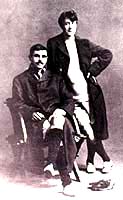
- Photograph of James Elroy Flecker (left) and John Davidson Beazley (right) around 1908
By 1908 Beazley had completed his undergraduate studies at Oxford and become a lecturer in classical archaeology under the University's first professor, Percy Gardner. As an undergraduate Beazley had been a close friend of the poet James Elroy Flecker; in the photograph above Beazley is standing, the dark Flecker seated. In 1907 Flecker dedicated his first published volume of poems to Beazley, and in 1911 Beazley published some of his own, which Flecker considered to be very fine, although modern poetry critics do not agree. Beazley's first published article on Greek vases - an unexceptional account of three in the Ashmolean Museum - appeared in 1908. Two years later he published his first list of vases assigned to an anonymous painter, and the following year 1911 he published another. By the time Beazley had established his method in print Warren, then in his 50s, was well known as a collector of classical antiquities. His interest in Greek vases had begun thirty years earlier, when he bought his first in Oxford. He too had published poems, and mutual interests brought the two men together. When Warren came to mainly live in Oxford after 1915, Beazley remained close to him. It is said that Beazley met Berenson under Warren's patronage. Warren's patronage certainly enabled Beazley to travel to the United States in 1914, and to publish Attic Red-figured Vases in American Museums in 1918. Dedicated to Warren and Marshall, the book paid particular attention to the vases they had acquired for Harvard University, the Museum of Fine Arts in Boston, and the Metropolitan Museum in New York. The text was a series of short essays about individual painters, with lists of the vases Beazley had attributed to each. The illustrations were photographs and drawings, Beazley's own, traced off the surface of the vase - the drawings used hereafter.
Set against this background of scholarship Beazley's method of studying Athenian vases and assigning them to painters can be understood. When he was an undergraduate Greek pottery was not a subject in the University's syllabus. Beazley largely taught himself. Furtwängler and others had begun to identify features of shape, pattern, design and figure style which they thought were important. Beazley developed the process further. The notebooks, notes, sketches and drawings, which are in the Beazley Archive today, enable us to follow his progress. Like other young men who had completed their undergraduate course, Beazley set off for the continent - a young academic's 'grand tour'. This is the first of many notebooks; his undergraduate college, Balliol, is still given as an address.
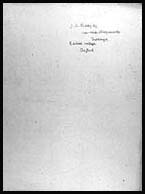
- Page from Beazley's first notebook 1908
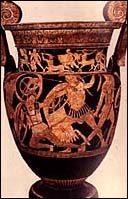
- Athenian red-figure vase
c. 460 BC
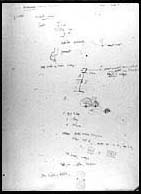
- Extract from Beazley's notebook, June 1908
He has travelled to Palermo and his eye has been caught by a large red-figure volute-crater with Amazons, made in Athens around 460 BC. Furtwängler had described and illustrated it in 1900. Although what is recognised today as 'Beazley's method' had not yet been set out in a publication, essential elements were already present in these notes on that vase, dated June 1908. Here there are sketches of parts of the shape, pattern-work, and on other pages, of figure-style, parts which he thought were significant. How Beazley came to his method, and what direct influence Berenson, or the method he adopted from Morelli, had on Beazley, is unclear. Beazley's family had moved to Brussels in 1897, obliging him to travel from London to the continent regularly on school holidays. He could easily have been aware of Crowe and Cavalcaselle's Early Flemish Painters. Indeed, he is said to have prepared his own list of Flemish paintings by artists, but this has not been preserved. Later, in 1925, when Beazley was being considered for the professorship of classical archaeology several of his referees drew attention to his wide knowledge of art and to his responsibilities for the paintings in Christ Church. That collection, known today as the Christ Church Picture Gallery, is one of the jewels in the University's crown.
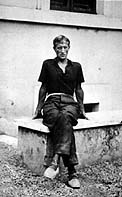
- Photograph of John Davidson Beazley about 1920
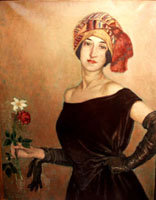
- Portrait in oil of Marie Beazley around 1920
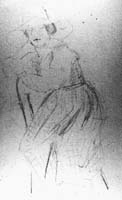
- Pencil sketch of Marie Beazley by J.D. Beazley around 1920
In 1910 and 1911 Beazley published articles which formally presented his method to the scholarly world. Unlike the older German scholars, who had tended to focus on high quality vases with inscriptions, especially signatures of painters, Beazley chose to study unsigned vases, proudly announcing that anonymous does not mean unknown. Using notes, sketches, finished drawings, and photographs, Beazley revealed the identity of the painters. The photographs were a later addition to his apparatus of scholarship, and initially largely the work of Marie Bloomfield, whom he married in 1919.




